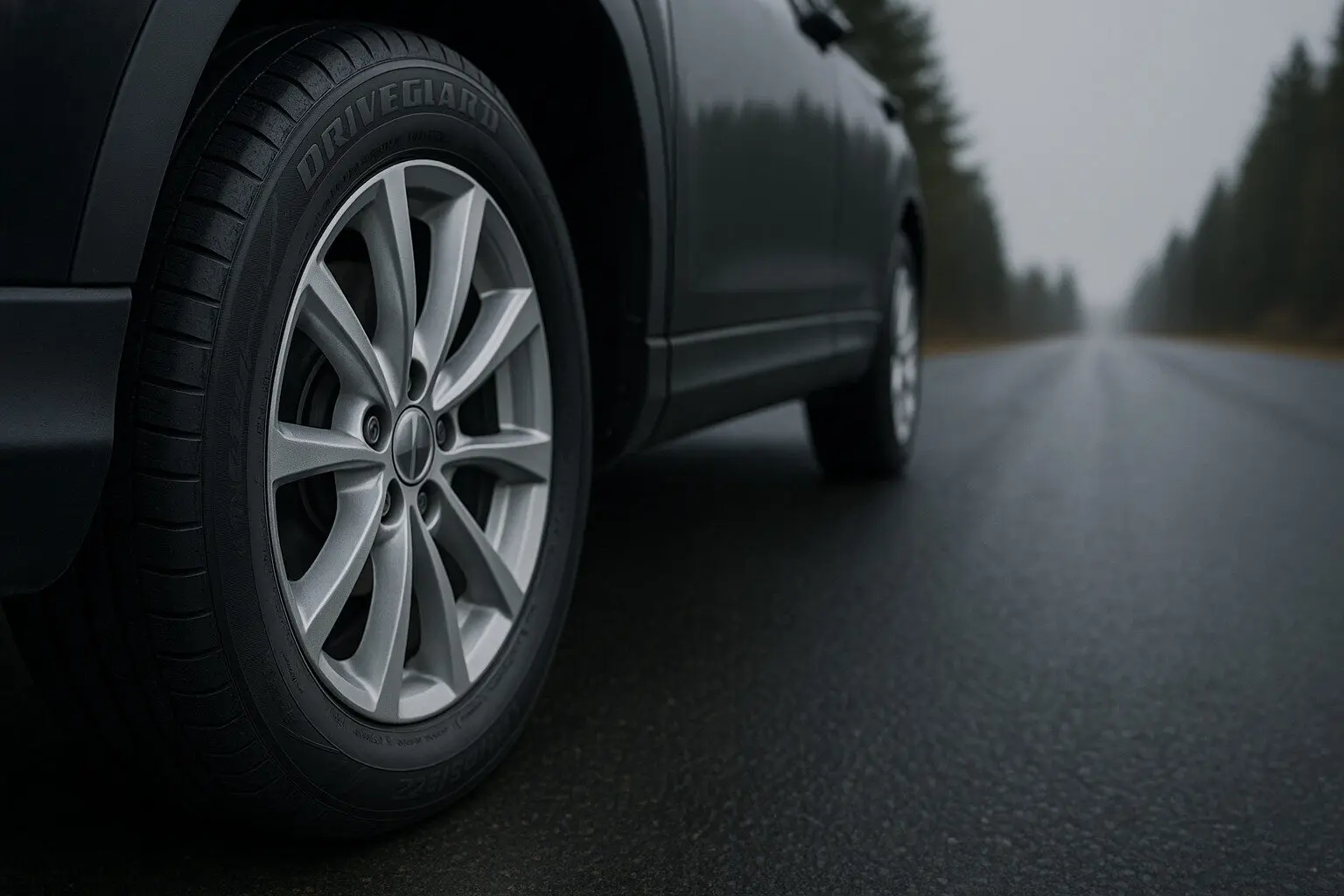The Evolution of Tire Safety and Convenience
Imagine this: you’re driving down the highway and suddenly hear that dreaded thump — a flat tire. Normally, that means pulling over to the side of the road, changing a tire in unsafe conditions, or waiting for roadside assistance.
But with run-flat tires, you could keep driving safely for several more miles, giving you the time to reach a repair shop or your destination. That’s the convenience and peace of mind run-flat tires promise.
However, like any automotive technology, run-flat tires have both benefits and drawbacks. So, are they really worth the investment? Let’s take a closer look at what makes them unique, how they work, and whether they’re the right choice for you.
What Are Run-Flat Tires?
How Run-Flat Tires Work
Run-flat tires are designed to keep functioning even after losing air pressure due to a puncture or blowout. Unlike regular tires that collapse when deflated, run-flats can support the weight of the vehicle for a limited distance — typically around 80 to 100 kilometers (50 to 60 miles) — at reduced speeds.
There are two main types of run-flat tire technologies:
- Self-Supporting System – The tire has reinforced sidewalls that hold up the car even without air pressure.
- Support Ring System – A sturdy ring inside the tire supports the vehicle when air escapes.
These designs prevent the tire from going completely flat, allowing you to continue driving safely without having to stop immediately.
The Advantages of Run-Flat Tires
1. Safety and Peace of Mind
The biggest advantage of run-flat tires is safety. A sudden flat tire can cause a loss of control, especially at high speeds. Run-flats minimize this risk by maintaining stability even after losing air.
You don’t have to make a dangerous roadside stop — you can drive to a safer location or directly to a tire service center. This is especially valuable for drivers who often travel long distances or through isolated areas.
2. No Need for a Spare Tire
Because run-flat tires can still function after a puncture, most cars equipped with them don’t carry a spare tire. This frees up trunk space, reduces overall vehicle weight, and simplifies car design.
It’s a convenient solution for those who want fewer tools and no hassle with changing tires on the road.
3. Better Handling and Stability
Run-flat tires are engineered with stiffer sidewalls that improve cornering and handling. Even during a tire failure, the car remains more stable than it would with traditional tires.
Many performance vehicles and luxury brands, such as BMW, Lexus, and Mercedes-Benz, use run-flat tires for this reason — they offer consistent control and balance, even under pressure loss.
4. Less Downtime and Hassle
With run-flats, you won’t be stranded waiting for roadside help. You can continue driving to your home, office, or repair shop without interruption. This saves time, stress, and the inconvenience of being stuck with a flat tire.
The Disadvantages of Run-Flat Tires
1. Higher Cost
Run-flat tires are typically more expensive than standard tires — often by 25% to 50% more per tire. This higher cost is due to their specialized design and materials.
Читайте також:
While the added convenience and safety are valuable, you’ll need to weigh whether the long-term benefits justify the price difference.
2. Limited Repair Options
Most run-flat tires cannot be repaired after being punctured. The reinforced structure makes it difficult to patch or seal them, meaning that once damaged, they often have to be replaced entirely.
This can increase maintenance costs over time, especially if you drive in areas with rough roads or frequent debris.
3. Harsher Ride Quality
Because run-flat tires have thicker sidewalls, they tend to provide a stiffer, less comfortable ride compared to standard tires. The reduced flexibility means more road vibrations and bumps may be felt in the cabin.
Car manufacturers often tune suspension systems to compensate for this, but drivers who prioritize comfort might find the ride a bit too firm.
4. Limited Availability and Choice
Not all tire brands or models offer run-flat versions. If your car doesn’t come with them from the factory, finding compatible run-flats can be more difficult — and they might not be available in every tire size or type.
Additionally, if you decide to switch back to conventional tires later, your car’s suspension and handling dynamics might feel different.
When Run-Flat Tires Are Worth the Investment
1. You Value Safety and Convenience
If you often drive long distances, travel alone, or commute through remote areas, run-flat tires offer peace of mind. You’ll be able to continue driving after a puncture without stopping on busy highways or unsafe roads.
2. You Drive a Vehicle Equipped for Run-Flats
Run-flat tires perform best on vehicles specifically designed for them — typically equipped with Tire Pressure Monitoring Systems (TPMS) and suspension tuned to handle the stiffer structure.
If your vehicle came with run-flats from the factory, it’s generally best to stick with them for optimal performance and safety.
3. You Don’t Want to Deal with Spare Tires
If convenience matters more than cost, run-flats eliminate the need to carry or change a spare tire. This makes them ideal for urban drivers who prefer simplicity and minimal maintenance.
When Run-Flat Tires Might Not Be Ideal
1. You Drive on Rough or Pothole-Prone Roads
Because run-flat tires can’t always be repaired, frequent punctures could get expensive. If your local roads are rough or filled with debris, standard tires might be a more cost-effective option.
2. You Prioritize Comfort
Drivers who prefer a smooth, quiet ride might find run-flat tires too firm. The reinforced structure reduces flexibility and absorbs less shock, making the ride slightly harsher on uneven surfaces.
3. You’re Concerned About Cost
If budget is a major factor, the higher purchase and replacement cost of run-flats might outweigh their benefits. Traditional tires, paired with a reliable roadside assistance plan, can offer similar peace of mind for less money.
How to Maintain Run-Flat Tires Properly
Even though they’re designed to perform under pressure loss, run-flat tires still need regular maintenance for safety and longevity.
Check Tire Pressure Regularly
Run-flats can mask the feeling of a slow leak, so it’s crucial to check tire pressure at least once a month. Always follow your vehicle manufacturer’s recommended PSI levels.
Rotate Tires Consistently
Rotate your run-flat tires every 8,000–10,000 km (5,000–6,000 miles) to promote even tread wear and balanced performance.
Monitor the TPMS
Ensure your Tire Pressure Monitoring System (TPMS) is functioning correctly. It’s your first line of defense against unnoticed air loss.
Inspect for Damage After a Puncture
Even if a run-flat tire seems fine after a puncture, have it inspected by a professional immediately. Driving too far or too fast on a deflated run-flat can cause hidden internal damage.
Final Verdict: Are Run-Flat Tires Worth It?
Run-flat tires are a great investment for drivers who value safety, reliability, and convenience. They eliminate the need for emergency tire changes and provide peace of mind in unexpected situations.
However, they do come with trade-offs — including higher costs, limited repairability, and a firmer ride.
If your vehicle is designed for run-flats and you prioritize practicality over comfort, they’re absolutely worth the investment. But if you prefer a smoother ride and lower long-term costs, traditional tires with a quality roadside assistance plan might suit you better.
At the end of the day, it’s all about your driving style, environment, and priorities. Whatever you choose, maintaining proper tire care and pressure will always be the best investment in your vehicle’s safety and performance.



 Читайте vgolos.org на Google News
Читайте vgolos.org на Google News